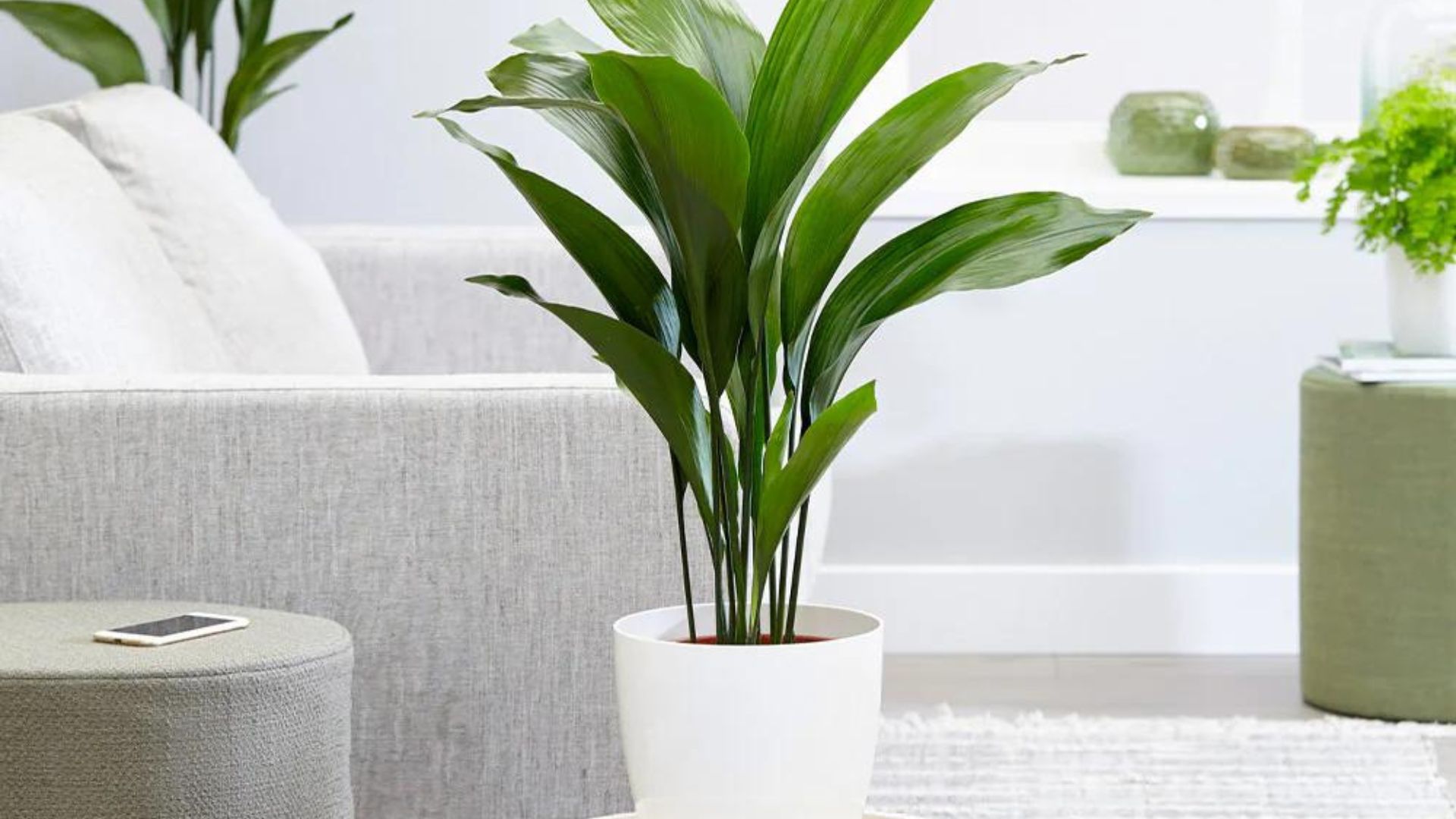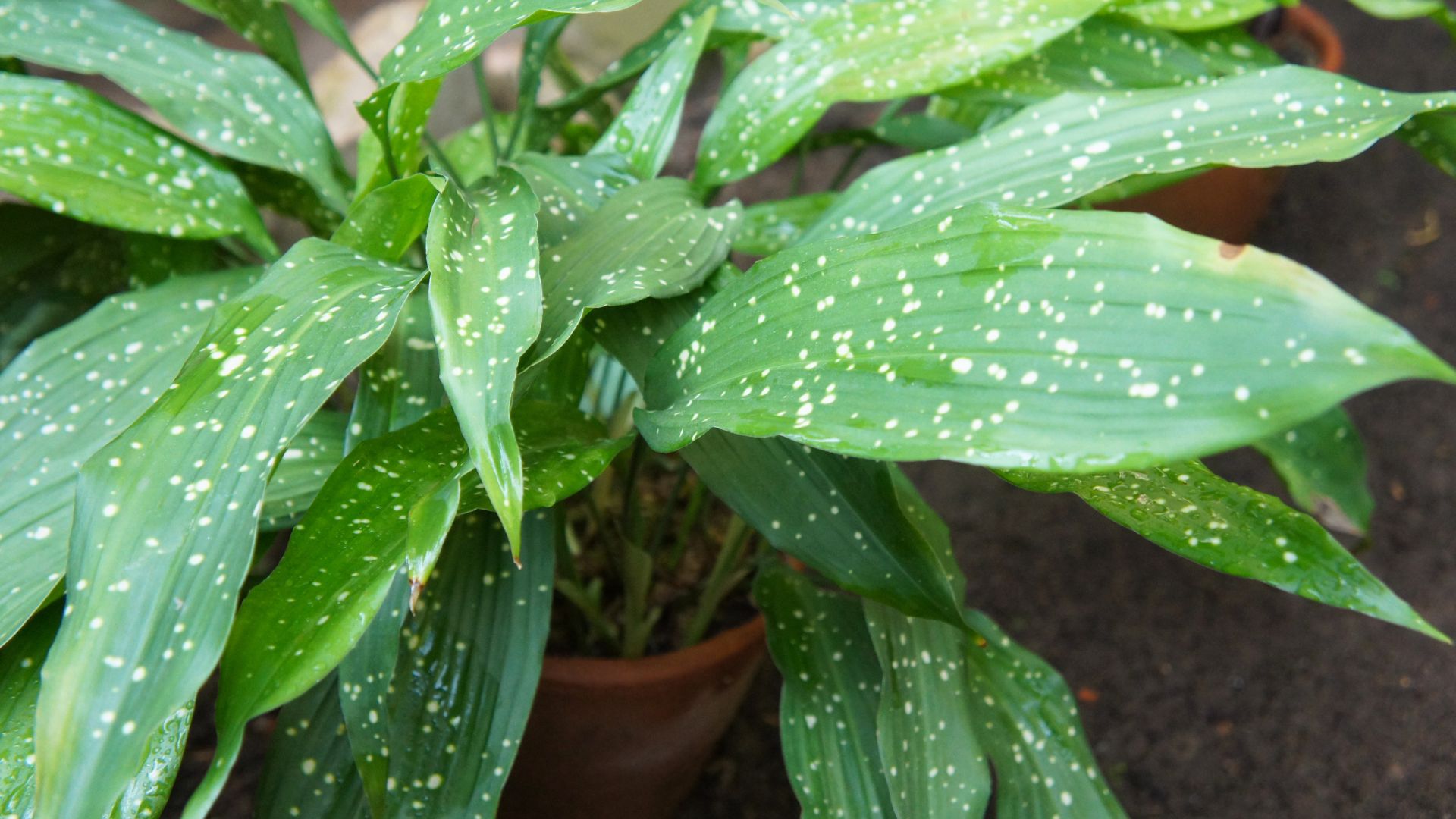
If you've found yourself adopting plants time and time again, only to have them withering away by your window sill, then this plant might be just be what you need to cultivate a prosperous indoor jungle. The cast Iron plant, also known by its botanical name, Aspidistra elatior, is a touch of grace in any home with its hardy properties and vigor.
Native to China and Japan, this beautiful plant encapsulates the essence of a peaceful home and is known to be one of the best plants for an indoor zen garden. Its lush green lance-shaped leaves are enough to bring a room to life, and the rewarding allure of the crop far overweighs the effort required to maintain their vibrance.
So if you choose to bring home a sense of natural tranquility with this hardy plant, then it's a good idea to heed the experts' advice on how to care for them like a pro. Here is everything you need to know about the ever so wonderful cast iron plant.
How to Care for a Cast Iron Plant?

When it comes to the beauty of caring for a cast iron plant, it's a reassuring fact that this is one of the houseplants even you can't kill. That's not a dig at your abilities as a plant parent, it could simply mean that your home isn't suited for certain grows or could also be a nod to the simple truth that some plants require far more maintenance, than others.
Lucky for us, the cast iron species is fairly low-maintenance and easy to care for. However, Lisa Eldred Steinkopf, from The Houseplant Guru, tells us that TLC catering to the plant's needs will allow for it to thrive in any living environment. Here are some tips to care for this houseplant for a flourishing foliage feature.
Sunlight: Lisa tells us that cast iron plants are known for tolerating low light. "I would give them a bright light in an east or west window," she notes. "However, it would do just fine in a north window, as well."
Water: These plants are actually quite sensitive to overwatering, so it's best to be cautious of drowning the plant, especially in low-light conditions. She recommends watering the crop only when the surface of the soil is dry. Additionally, she finds that it's more likely to succeed in a planter with proper drainage to avoid flooding.
Temperature & Humidity: You don't need to pay too much attention to the temperature and humidity levels you're growing this plant in, as they're pretty much suited for any average indoor setting. They prefer temperatures between 60 to 75 F, but if your plant nook happens to be drier than most, then you might consider altering their surroundings to be a tad more humid.
Soil: According to Lisa, they prefer well-drained soil, which ties into their need for minimal watering. Consider planting your cast iron crop in rich organic soil with a neutral pH level.
Fertilizer: Since these plants don't require too much attention, fertilizing them is not really necessary. But if you're not dealing with a store-bought live plant and are instead growing your own, then she encourages fertilizing them on a monthly basis, while they are actively growing.
How to Grow a Cast Iron Plant?

Step 1: Plant in well-draining soil
Step 2: Place pot in an area of the home that receives good light
Step 3: Treat the plant with fertilizer every month
Step 4: Dust leaves when needed
When it comes to growing your own cast iron plant, Lisa tells us that the first step is to plant your cast iron plant in well-drained soil — in a container with a drainage hole. She recommends placing it in a spot that receives good light and also points out that it will likely require more love from the sun if it's of the variegated variety.
She encourages treating the plants with a monthly dose of fertilizer and allowing the soil to dry down before quenching the plant's thirst.
"Remember to keep the leaves dusted and rinsed to allow them to photosynthesize better," she says. "Dusty, dirty plants don’t allow the plant to photosynthesize well."
And if you're looking to extend your cast iron collection, then the best time to do it is now, as these are some of the best plants to propagate in September.
So if you have got a person in you're friend group who just can't seem to keep a houseplant alive or if you identify as this persona in your own right, maybe you're just missing out on a resilient cast iron plant.
And now, if you ever come across any common problems while caring for your cast iron grow, you have all the advice you need to treat your plant's malady like a pro.
FAQs
What are the common problems associated with the cast iron plant?

Landscaping expert Tom Monson tells us that the problems that typically affect these plants are attributed to common houseplant pests such as spider mites and scale. "Use a horticultural oil to deter the pests," he says. "Also, brown leaves indicate overwatering or underwatering, so if you notice a change in color, adjust the watering schedule." A good way to spot if spider mites have been feeding on your plant is by checking your plants leaves. Tiny white streaks or spots will start to appear if pests are present.
Lisa has also experienced pest problems with her cast iron plants and recommends that gardeners keep an eye out for mealybugs. We recommend this highly-rated Monterey Horticultural Oil Spray, from Amazon for a quick fix to any houseplant pest control issues.
Price: $47
Size: 10-Inch Pot
Place this gorgeous cast iron plant from Amazon by your window, on a table, or take inspiration from Kris Jenner's plant pedestal styling for a touch of indoor greenery.







